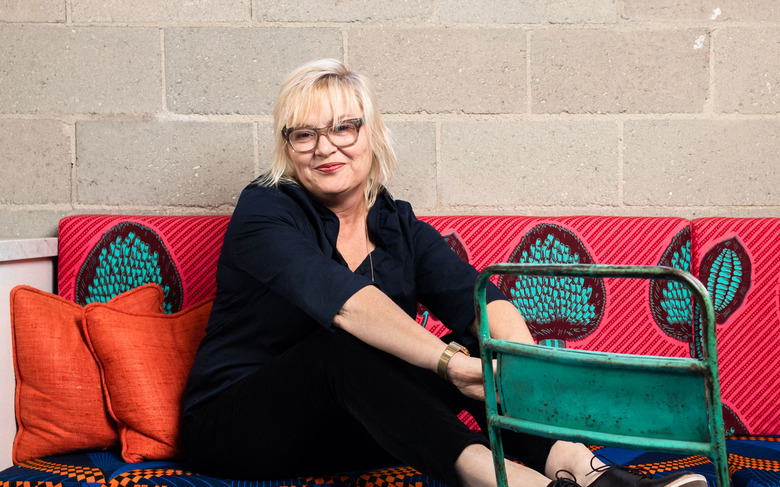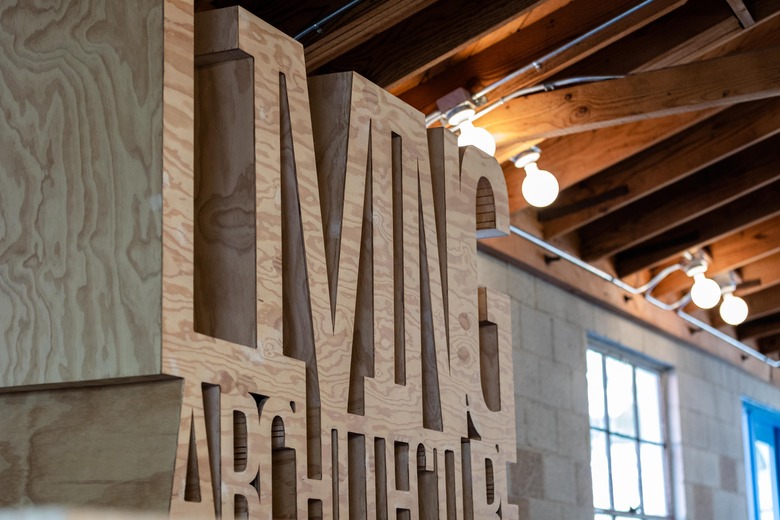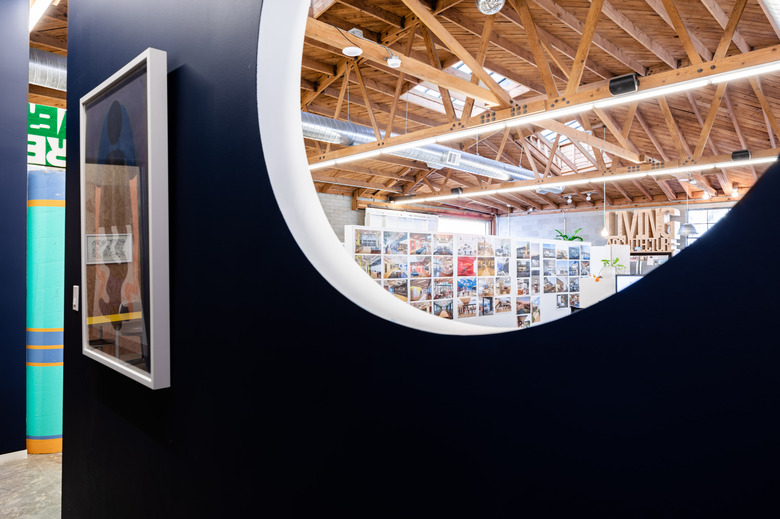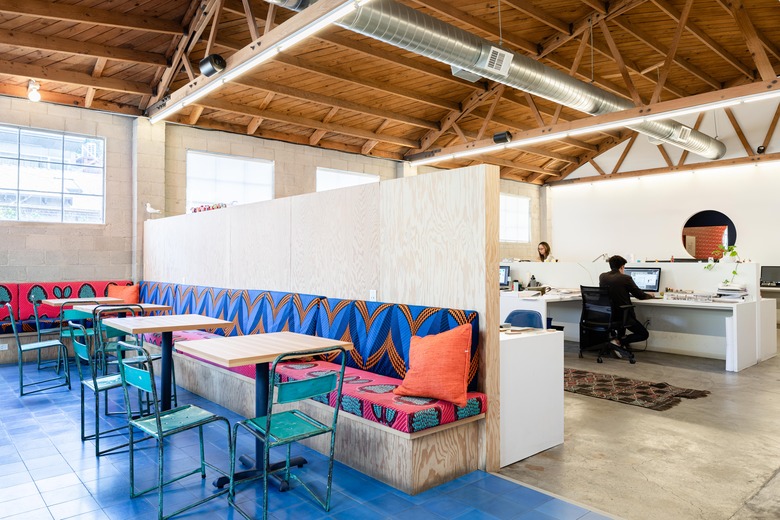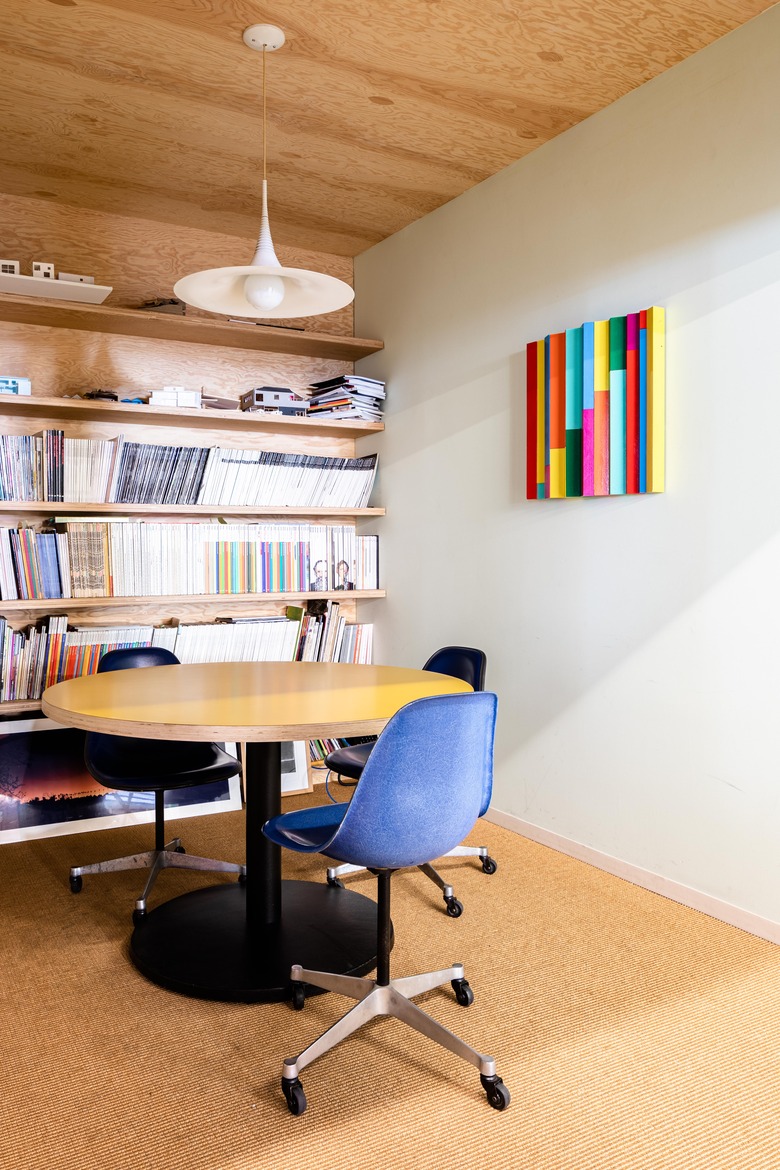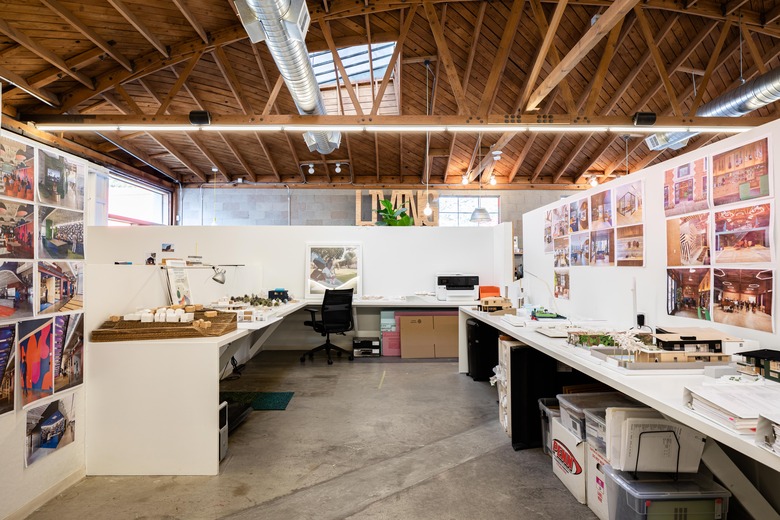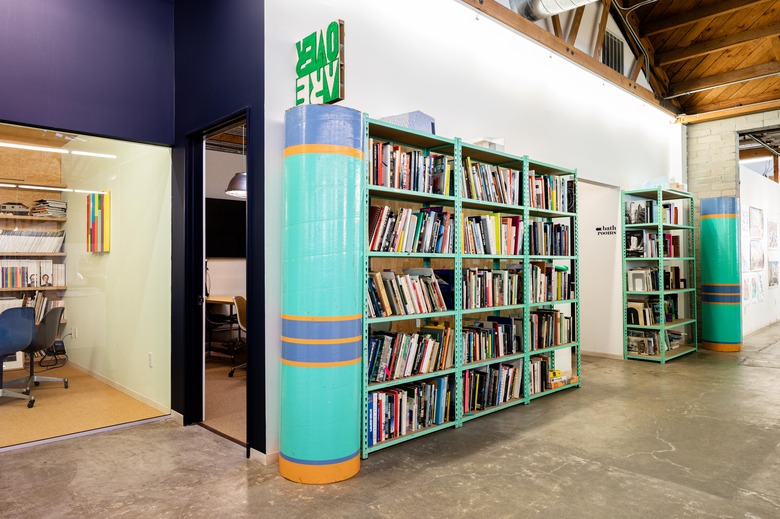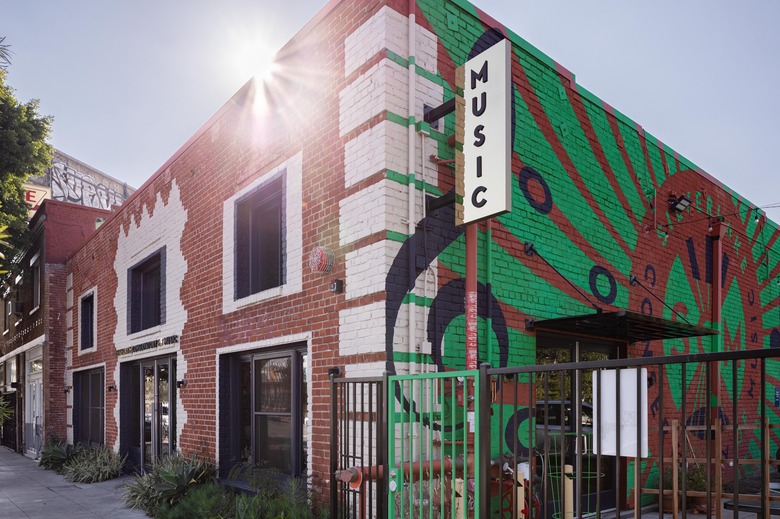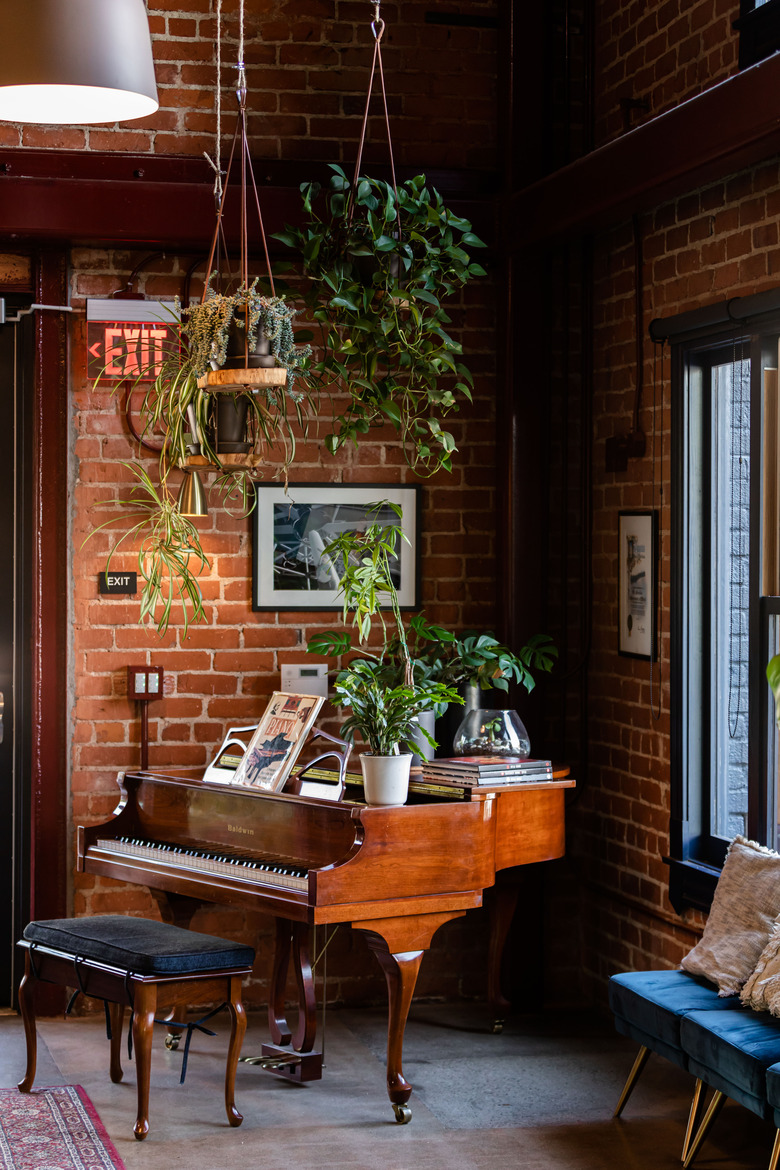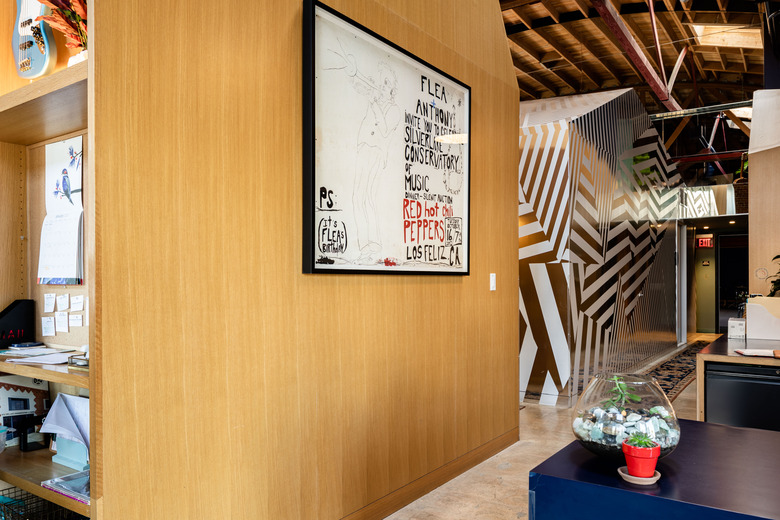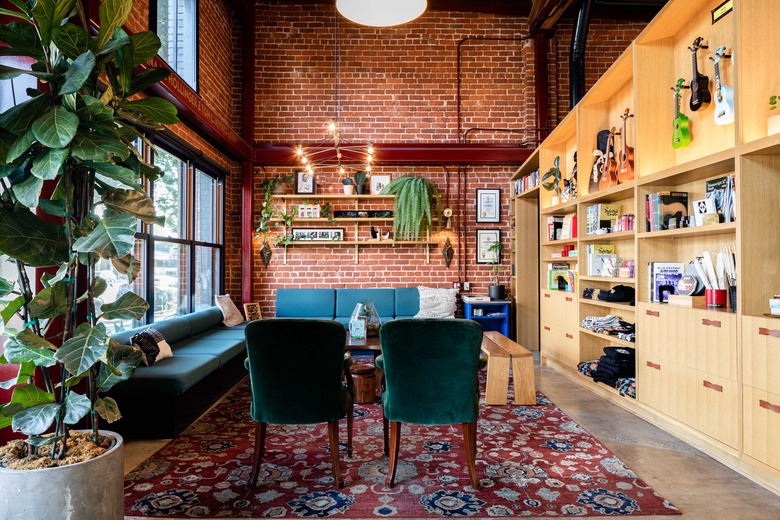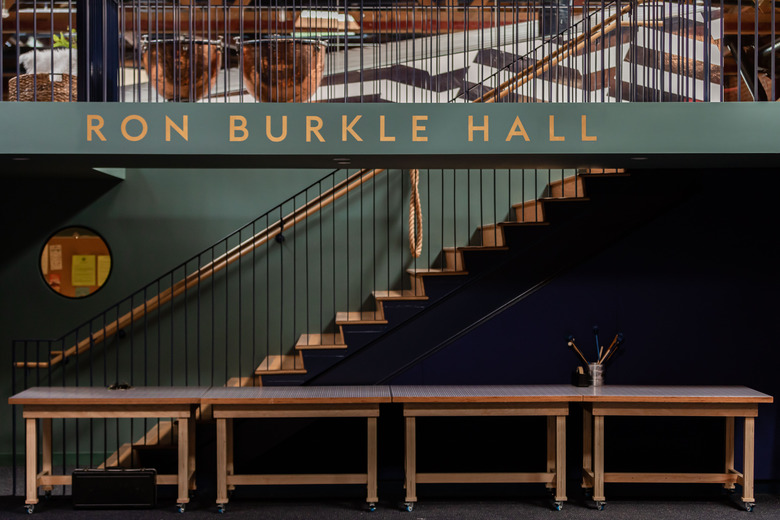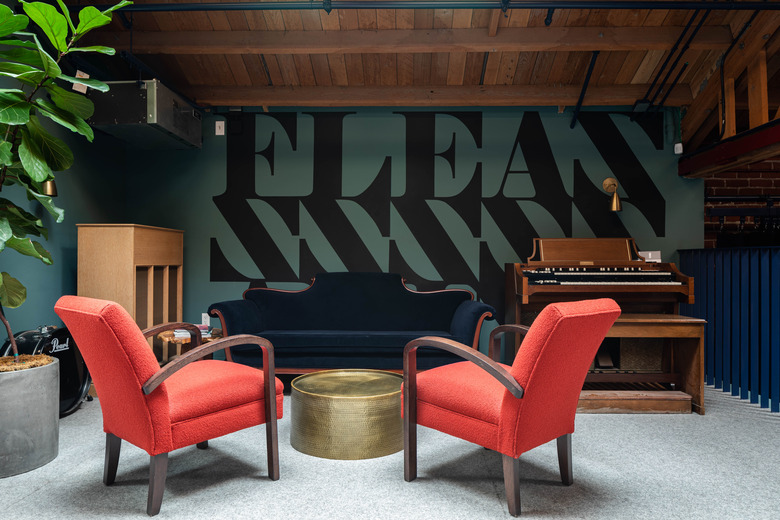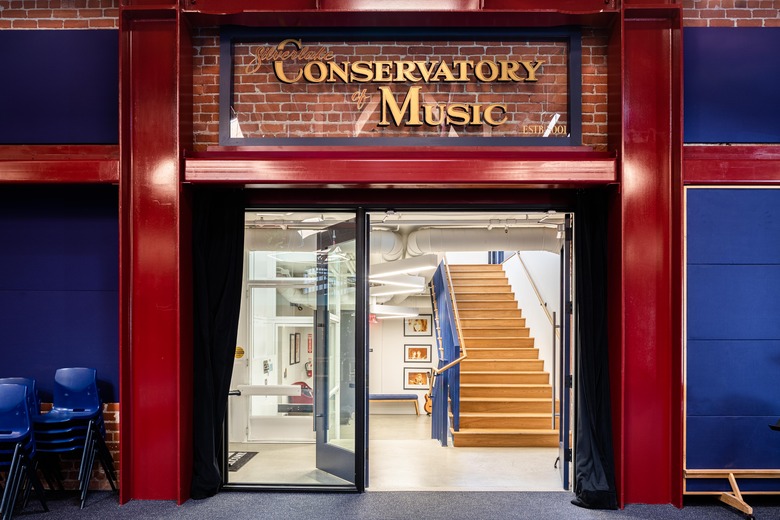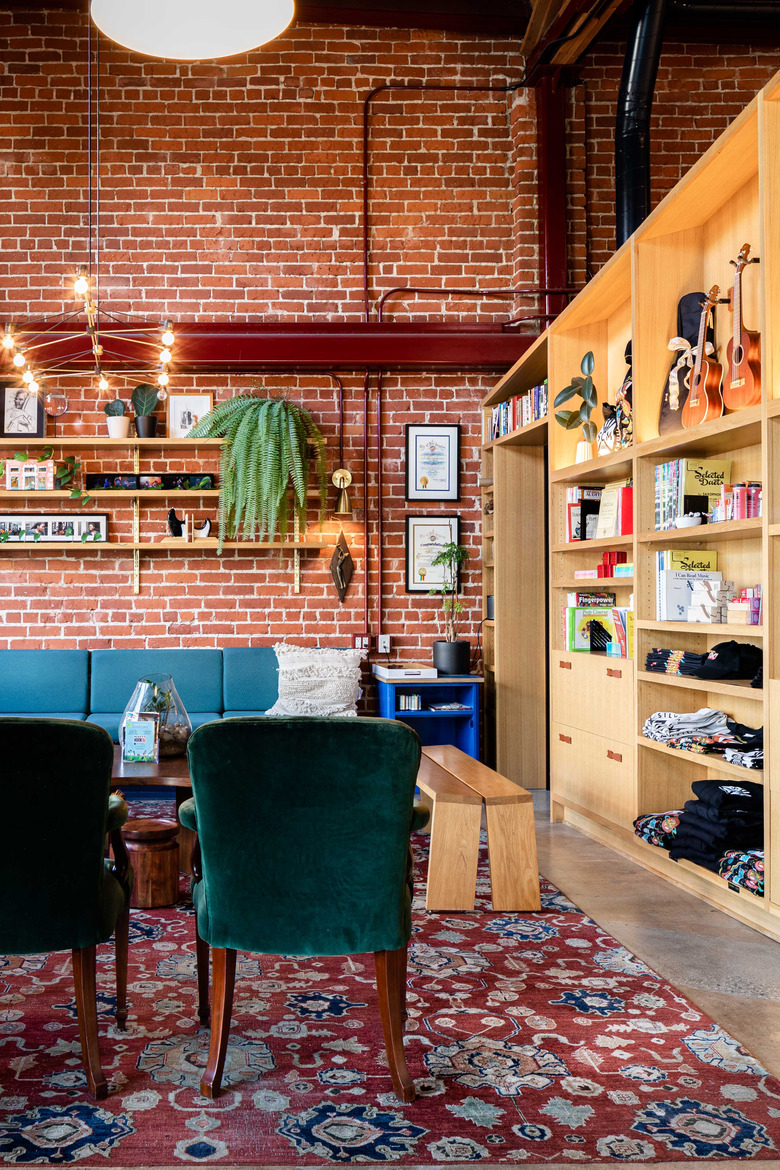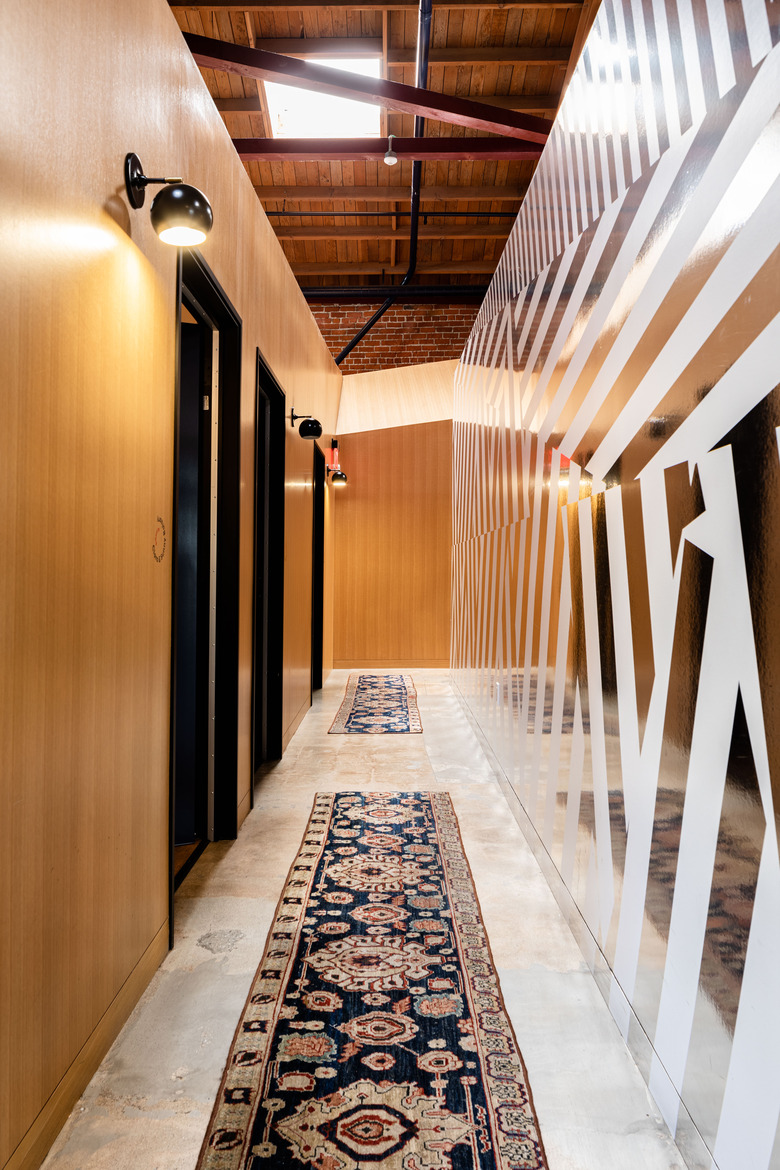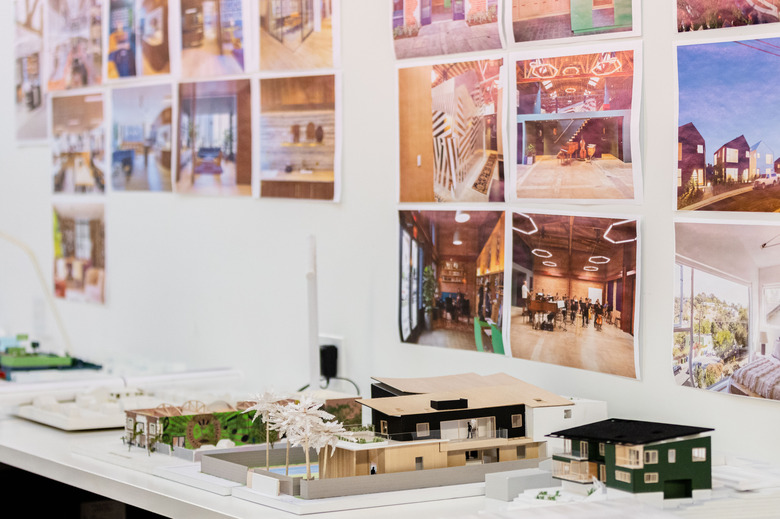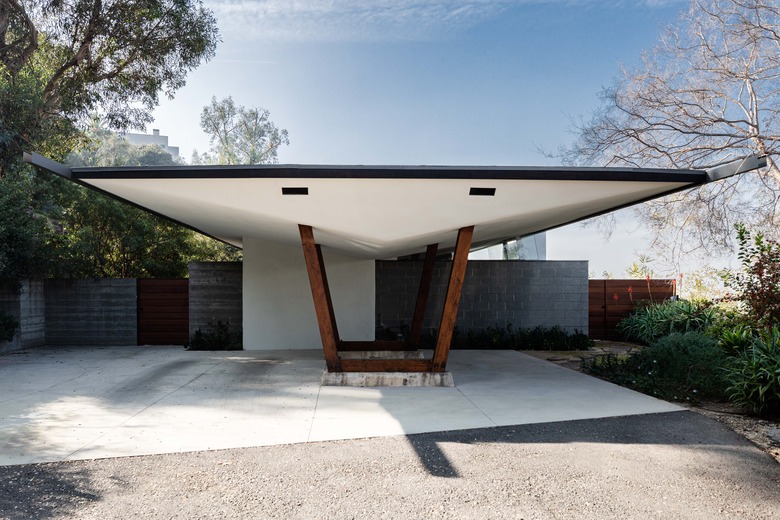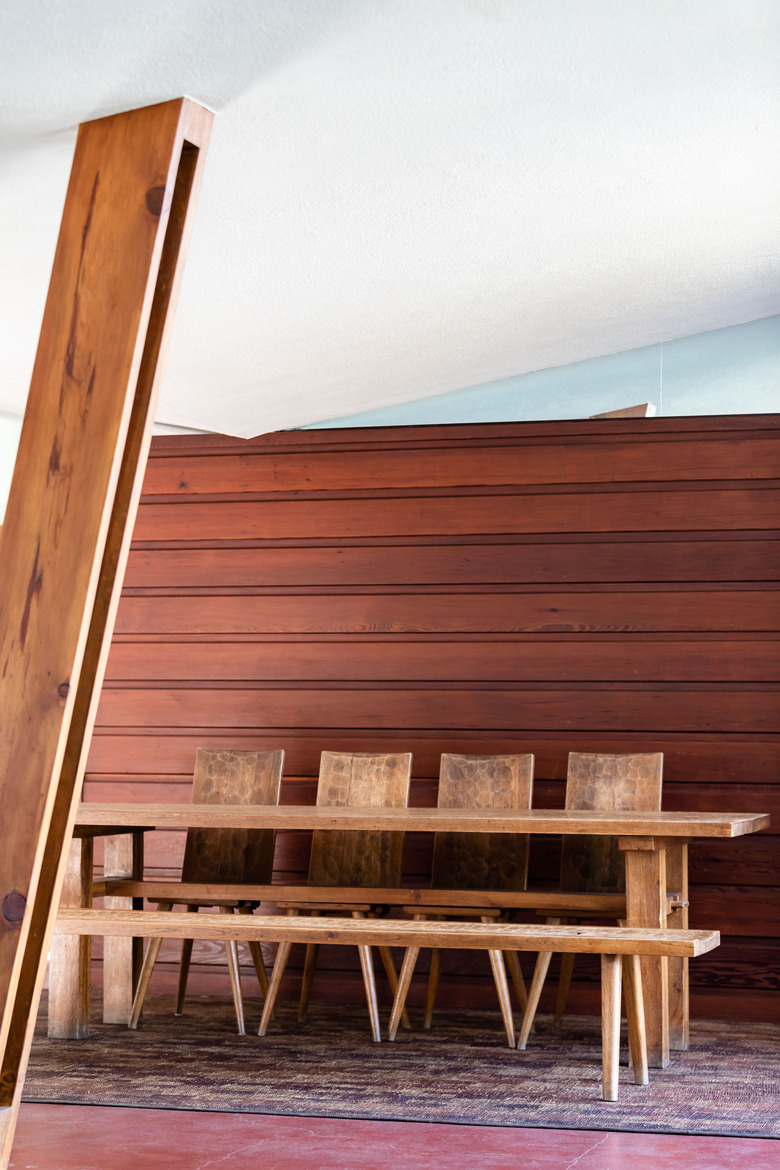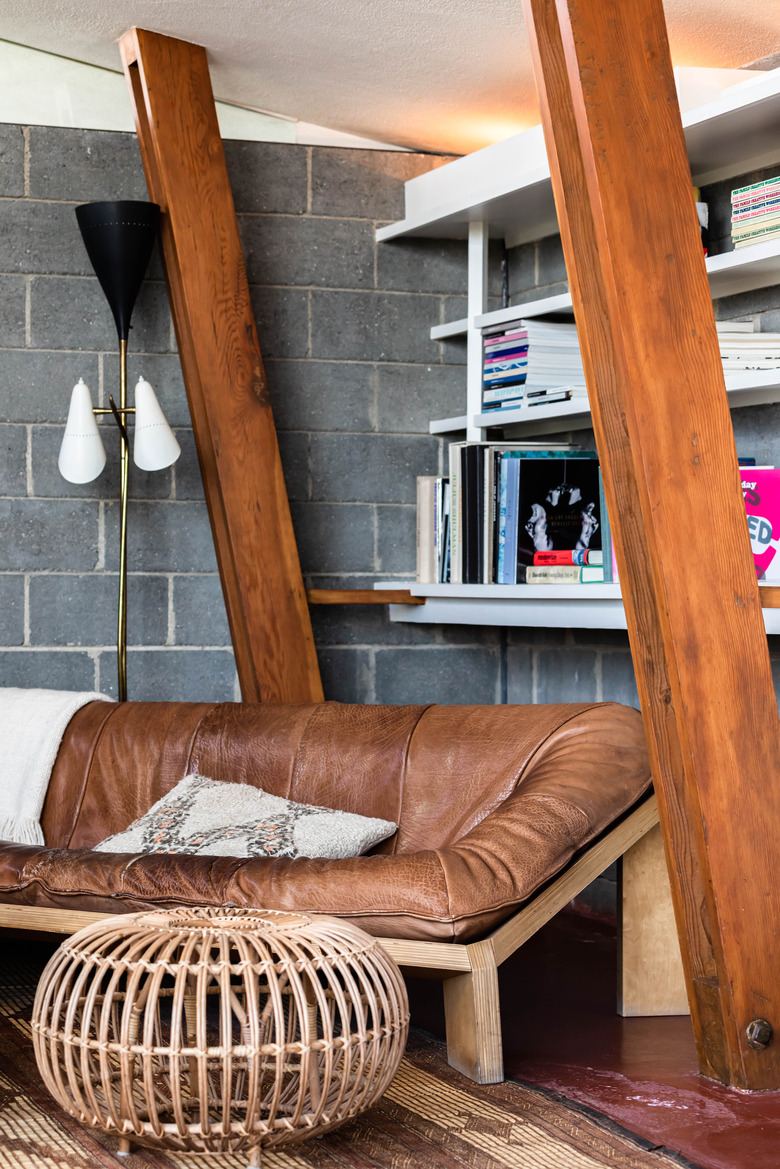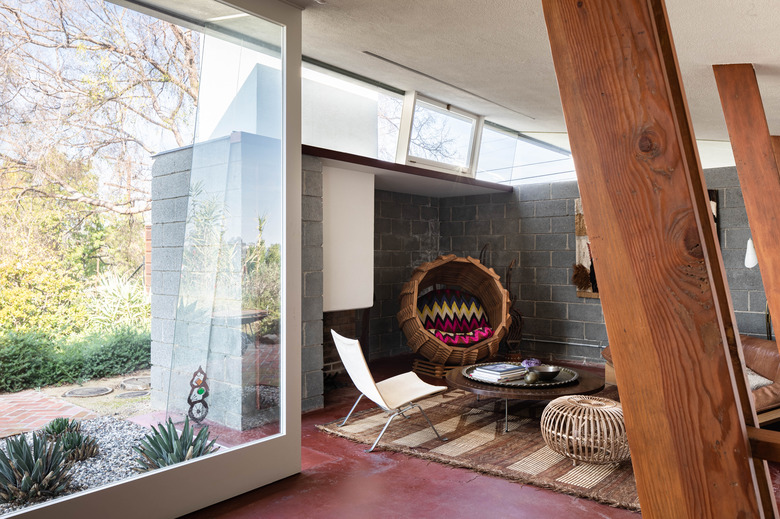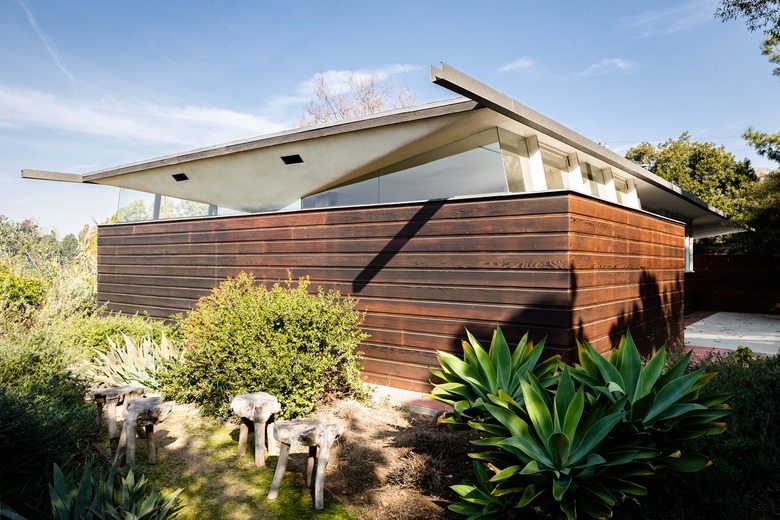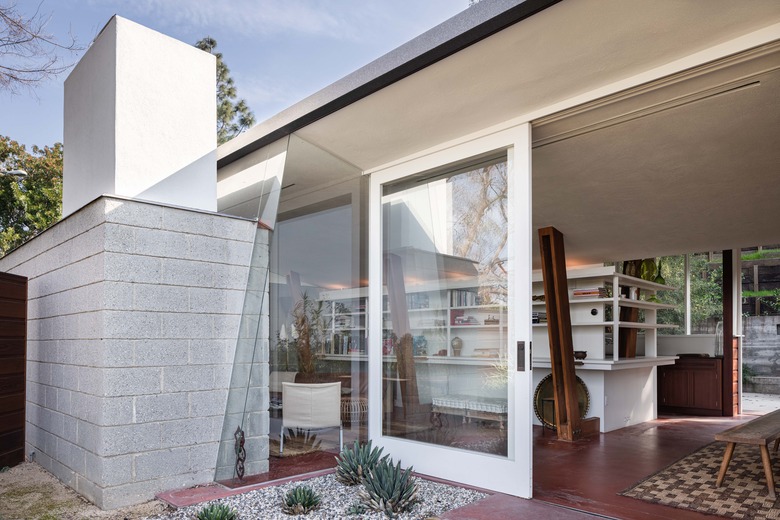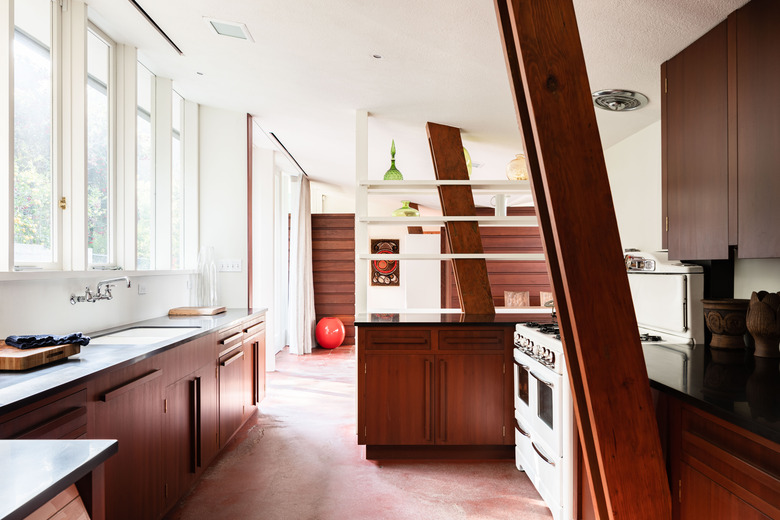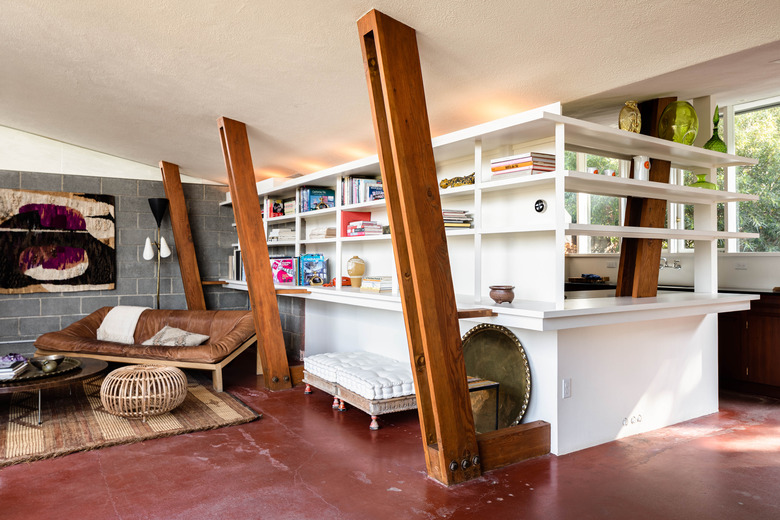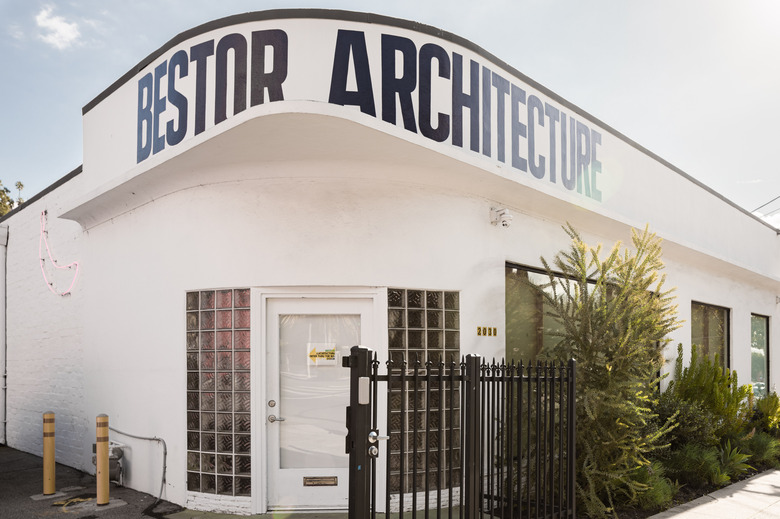Architect Of Impact: Barbara Bestor
There's an excitement that surrounds Barbara Bestor of Bestor Architecture. And it's not just her multiple awards, making the AD 100 list of top architects and designers, or her ridiculously hip list of clients, including retailer Nasty Gal, coffee company Intelligentsia, and Beats by Dre on the commercial side, and designer Trina Turk, Beastie Boy Mike D, and director Tamra Davis on the residential. Bestor is kinetic, and it comes through in her imaginative architecture, with its range of styles and solutions.
She takes the opportunity to enhance our daily lives through the design of a sidewalk café, massive work campus, or (restoration) of a beloved historic home very seriously. Sure, all architects would argue they do, but when you walk into a Bestor-designed space, there's often this feeling that, Wow, someone really was thinking about me, my comfort, my needs, my hopes. Or there's the other typical reaction: "This place is cool!" voiced by kids, adults, and even grandparents.
We visited Bestor at her 6,500-square-foot studio on a dream stretch of Hyperion Avenue in Silver Lake, where she's been for two years (and locked in a 20-year lease) to talk about her work, why Los Angeles is the place to be an architect, and ways to address its current housing crisis.
Teena Apeles: You've designed some high-profile headquarters over the past few years, each with very unique designs. What do companies as large as Snap Inc. prioritize in their offices?
Barbara Bestor: I would say in the world of tech startups, it's about what's the feeling. If they hire us, it's because they want something that isn't generic. I mean, we can do that, but we generally try to do things that are fun, designy, and humanistic. It's really about trying to figure out what that company's culture is. Beats was just 17 people when they started, and when they moved in, by the end of everything, it was 580 people. Snapchat grew similarly, so you see the culture being built as you build the buildings. It is very exciting.
TA: One of my favorite spaces you designed is the Silverlake Conservatory of Music on Hollywood Boulevard in Los Feliz. It feels warm and intimate in the "living room" waiting area with the exposed brick walls and soft lighting, while anyone who walks into the studio areas and performance space is completely energized by the towering ceiling and skylights, your color blocking, and the use of that reflective gold-striped-patterned structure that is a total wow moment.
BB: Thank you, I love it too! We just did the parking-lot graphics, which are really rad. I loved the Silverlake Conservatory of Music because it's about community, it's fun, and it's flexible. I even joined the Board of Directors.
TA: You're working on a Jewish community center right now. What special considerations are there when you're designing a place of worship?
BB: The organization is IKAR, led by progressive Rabbi Sharon Brous. Their aim is to combine social justice with sanctuary. The sanctuary is a very large space, used mostly once a week, and then on the high holidays, it's very crowded, so there's a high-density component when everyone arrives. On a weekly basis, it is less crowded. We want to design for the flow of people, but also make a sanctuary space with a strong connection to the outdoors — instilling mindfulness in the group space. That to me has a lot to do with light and nature, and makes it suitable for different kinds of engagement. In today's city environment, a huge space that's empty most of the time is less desirable, so how do you make it versatile?
TA: I've seen Jewish centers in our area with privacy glass and security guards. Do privacy and security figure into your design?
BB: Privacy and security concerns are also major design considerations. The security is necessary but it doesn't need to feel like you're entering a fortress. I've seen many new buildings literally are fortresses: no windows, solid walls. We're keeping the entrance open and welcoming, that's part of the mission this group, but also very safe. So the sequence of the entrance, security, et cetera is highly considered and carefully designed.
"I think LA is the best place, I think it always has been the best place to be an architect in the U.S. since the beginning of the 20th century. It's got this unusual atmosphere ... it's a bit like the Wild West so historically you could do whatever you wanted experimentally." — Barbara Bestor
TA: At this point in your career, what excites you most? You have had so many notable clients and projects.
BB: I like learning new institutional and company cultures, as they are almost like genre categories. We're doing something for an entertainment company now, which we haven't done for a while. Entertainment as a business is more social than tech, so that's a nice change of pace. The space is less gigantic, and everybody working is probably a creative, so it has a kind of different collaborative culture, so that's fun.
TA: You're among the most celebrated LA architects working today and one of the most profiled women in the industry.
BB: Well, I don't know about that! I wrote a book a long time ago about Silver Lake, Bohemian Modern. That's kind of how my name got out initially. I would also say a lot of people know me in LA who aren't architects, I think because some of my work is in that semi-public world of restaurants, music schools, et cetera. I also like to have big parties, and that kind of stuff makes me a little different. I am happy to have articles about me and other women written, diversifying the field. I hope to start to get more women, people of color, et cetera in this field through hiring and through the schools. I used to run the grad school for Woodbury University, and we placed a high value on diversity.
TA: We first met at a reception you co-hosted to raise awareness about artist and activist Corita Kent and the Corita Art Center. And it's clear from the art exhibits you've been involved in, including ones featuring graphic designer Deborah Sussman and Brazilian architect Lina Bo Bardi, you're invested in highlighting other female innovators.
BB: The shows extend these amazing people's work to those who didn't know what they were making. There aren't that many people doing shows for architecture these days, so I'm trying to do my part.
TA: Could you imagine yourself operating from anywhere else but Los Angeles?
BB: I think LA is the best place, I think it always has been the best place to be an architect in the U.S. since the beginning of the 20th century. It's got this unusual atmosphere ... it's a bit like the Wild West so historically you could do whatever you wanted experimentally. So you have all the Euro-imported experiments, but you also have the homegrown architects who studied at Taliesin in Arizona and then migrated to LA because there were more opportunities to build.
There are incredible buildings in LA that were done by western architects like that, with a very experimental ethos. This is in deep contrast to East Coast architecture, where the schools have always been very Euro-centric. It's really quite conservative formally, though intellectually it's radical often, but not necessarily in the way that it affects the built environment. They're ideas, but not buildings. Here in California you have buildings that have really interesting experimental forms and ideas.
TA: Do you also find that people here are more willing to take risks?
BB: People are interested in making or being the next thing. It mimics how the fashion and the art worlds seem to be pretty centered in LA nowadays.
The Salkin House in Echo Park by architect John Lautner that Bestor restored for fashion designer Trina Turk.
TA: Can you name a couple projects that have been especially meaningful for you?
BB: I don't know that I can narrow my choices, because there's stuff that I love because it's so detailed and beautiful, like a jewel, and some houses I've done are like that, but then I've done work like Blackbirds [in Echo Park], one of my most favorites, which is 18 houses on a hillside residential community. As our scale increases, even if it's into commercial offices, the idea of building community is a bigger form of architecture, that not only the shape of the building matters — but you are also doing this bigger social design and mission. Another recent favorite is Ashes and Diamonds in Napa, which is a winery [event center], and landscape celebrating California modernism.
TA: Do you think the whole single-family home with the garden and the backyard should die, especially considering the housing challenges we are facing in LA and California with space and a growing population?
BB: When I moved here, the issue was not densification, but it was sprawl and how we contain the sprawl. It was like every day there would be a new development in Palmdale or further out, and it was this kind of cancerous growth, you know, bad new-home building everywhere. And that was literally the discourse of the '90s, or late '80s. It was much later in the 2000s when we started seeing this bigger return to the city and the city core starting to recycle itself. I think building a denser city is very important and [I] hope our architecture and planning community can come up with new neighborhood models that create community.
TA: What are your thoughts on approaching housing in LA in the future?
BB: I think the city needs to have a much more empowered and funded planning department. We do not currently, and we have had laissez-faire planning for so long. The last time LA built a new district with new streets was Playa Vista in the '90s. There's no top-down "let's create a new district," but I think there should be. The planning department has helped densify urbanistically when they drew a circle around Downtown and said, "OK, this building and this streetscape, you can turn it into housing and it won't require parking," and then, voilà, there was this huge boom. That's the kind of stuff you have to do to really improve the city's urbanism as it densifies. Because of the restrictions and requirements and parking needs, it is very difficult to build a lot of housing without the dreadful podium model.
TA: That's affordable?
BB: It's not even that it's affordable. They just passed a law yesterday, I think, regarding environmental impact reports, to lessen the delay in approvals. One of the issues is, let's say that LA city controls 10 parking lots that they'd like to use for new homeless housing. Those parking lots have to do an environmental impact review that takes about six years before you can even think about building on it.
TA: These are factors many of us aren't aware of.
BB: So a lot of the criticism is that the land that's available that the city could give someone to build on often has all these California regulations that have their own legitimate reason to be, but some of them are kind of not as necessary now, and that's a big issue. Also there is a lot of zoning throughout that is not progressive. With the up-zoning attempts meeting NIMBY attacks every day (and there are tons of things that could be totally up-zoned that wouldn't even affect any of the homeowners actively), but you have to have a planning department with some teeth to combat the legal challenges.
When I was running Woodbury's graduate program, we were trying to get more architects to go into the planning field. It used to be that architecture and planning were taught together, but then planning became kind of more of a political, economic, geographic field ... and not really a design field at all. I would like to see architecture and planning education that trains people who can collaboratively envision the future.
TA: In terms of your own space, you have a long future ahead in your studio, ensured by your long lease, with plenty of space to grow. Do you love being here?
BB: Yes! I have a parking lot and natural light, and, oh my god, it's a huge game changer. We have it set up so we could have three times the amount of people if we wanted to. Right now, it's a luxury of space, and we're building a model shop.
I laid out the studio to have three [independent] sections ... [that] are subdividable, and we use two of them as workplaces. For the third one, I thought, Am I going to use the last one for me? Rent it out for a yoga studio? For now, I'm using it for us, and events. Or maybe I will one day open a deli. That's my dream, to have a deli.
1. Credits
Words: Teena Apeles
Images: Stephen Paul
